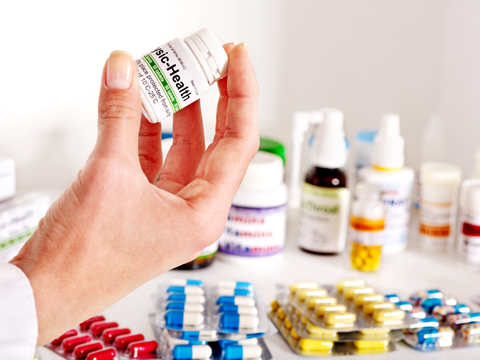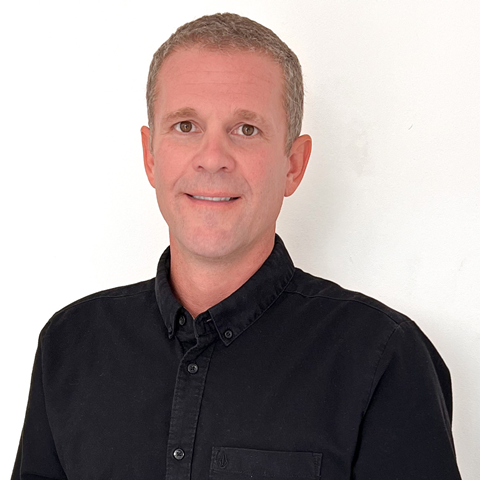
In the life science sector, clear and correct labels are required to ensure user safety – but rapid shifts in labelling requirements can cause roadblocks. In this latest ‘In Conversation With…’ feature, Esko’s Life Sciences category specialist, Jackie Leslie, and Life Sciences product manager, Joe Giannotti, tell us more about the value of artificial intelligence and automation in optimizing the printing process for an ever-evolving industry.
For our readers who may not be familiar, could you give us an overview of the artwork process and how automation and AI can help?
JL: The artwork process starts with a request for a new label or leaflet artwork, or a change to an existing artwork. For Life Sciences labelling, a change can be triggered by a number of events, such as safety changes, regulatory changes, or technical changes; but any type of labelling request will flow through a creation or update process, followed by review and approval cycles, and go right up to the print and distribution activities.
Anyone who is involved in this process will know the effort is significant because of the sheer volume of changes, the number of artwork to manage, and the checks and balances needed to ensure 100% accuracy.
As far as where automation and AI can help, generally anything that is somewhat structured, repetitive, and manually intensive – which much of LS labeling is – is a candidate for these types of technologies. Automation and AI can eliminate many of the manual activities. Not all, of course; there still must be human involvement and oversight, but automation and AI can greatly assist and streamline the process.
What are the differences between semi-automated, full automation, and online editing processes, and what does each one offer?
JG: In a semi-automated workflow, a combination of manual and automated processes can be used to produce final artwork intended for printing. An essential feature of this workflow is the requirement of at least one manual action to complete the process.
For instance, a designer employs a graphic editor and utilizes a plug-in to “accept” content, which is then automatically integrated into the artwork. Once the content is placed, the designer can further refine the artwork by adjusting layers, managing overflows, and making other necessary modifications. This workflow is well-suited for various tasks, including redesigns, creating fresh designs, initial artwork creations, and developing intricate designs containing complex elements.
In a fully automated workflow, all manual steps are eliminated to create final artwork ready for printing. For instance, an operator selects content and a template, then clicks “generate” to preview the new artwork. The system utilizes fine-tuned approved artwork templates along with predefined rules and approved content to generate the final design. This process is particularly suitable for tasks such as creating multi-page designs heavy with text and containing multiple languages, as well as for producing labels, leaflets, IFUs, and inserts.
Turning our attention to the life sciences industry – in a sector where products, markets, and regulations rapidly evolve, where does AI and automation come in?
JL: That rapid evolution is driven by a desire to make products more widely available to different markets and to make them safer, but that also means generating more artwork and managing more changes.
Imagine a simple scenario where a warning statement needs to change across a product line. Today that would typically be done manually, with a copy/paste of content from a copy document in MS Word into the Illustrator or InDesign artwork file, then that file would go through layers of quality checks and reviews, again very manual, to ensure the change was done correctly.
It’s a very manually intensive job, which presents risk, because people can make mistakes and miss things. Also, before the change process even starts, someone has to figure out which components need to change, which in itself is a challenge and requires manual effort.
With a portfolio of a few artworks, a manual process may be manageable. But most companies sell products in multiple countries and many products come in different dosages and strengths or presentations, so the volume of artwork rapidly climbs when you consider all of these versions.
AI and automation can assist with identifying what artwork needs to change, they can assist in making the change, and they can assist with quality checks. It’s really a transformative opportunity to streamline the entire process.
Could you tell us more about Esko’s Content Management and Artwork Automation solutions and how they can benefit customers?
JG: Esko’s Content Management and Artwork Automation solutions are designed to improve businesses’ handling of their artwork processes. These solutions simplify how content is managed and automate print-ready outputs by reusing assets and compliant content.

Think of our Content Management System (CMS) as an organized hub for your digital assets. With everything stored in one place, including images, graphics, and approved content, it makes it easy for team members to find what they need and work together smoothly. Approved content in WebCenter sets the stage for full automation because placeholders within Adobe templates are dynamically linked to approved content in the CMS.
Our Artwork Automation solution is like having a powerful assistant, ensuring that every piece of artwork meets your brand’s standards flawlessly. By utilizing approved Adobe templates, this solution ensures consistency across all artwork assets, regardless of their complexity. These templates serve as ready-made frameworks, guiding designers with predefined layouts, fonts, and placeholders, guaranteeing that every design aligns perfectly with your brand identity and regulatory requirements.
In your view, how will these technologies evolve going forward – both Esko’s contributions and AI/automated solutions as a whole?
JL: Esko has been providing automation in our solutions for many years, but in the last couple of years the technologies have really advanced and there’s no reason to think that the pace will slow down.
There are many use cases for these technologies, more seem to come up on a weekly basis, but we’re spending significant time identifying those that we believe will really save time or add value.
In terms of the evolution around artwork processes, expect technology assistance in practically every step – starting with the complex process of determining how to manage differing implementation dates for overlapping labelling changes, and having more assistance with content creation and translations.
We’ll see more refined quality checks, whether they’re related to content or branding, with notifications for the approvers when an artwork is created with something outside of the expected parameters. Sustainability initiatives will focus on how to use these technologies to build artwork with the most sustainable packaging from structure to design to inks and printing. And overall product portfolio reviews will become much more automated, to the extent that recommendations can be made on brand consistency and best practices for an organization.
More broadly, we expect the artwork process to become fully connected to other parts of a company’s eco-system, well beyond how integrations are done today. Systems like Bill of Materials management, pharmacovigilance, and supply chain will be able to exchange data more seamlessly and send alerts across systems when something happening in one part of the business may impact another part.
Are there any hurdles for a company to take advantage of these technologies?
JL: The biggest hurdle is, and will continue to be, change management. Some companies today are not ready to take on this type of transformation. It will change the way people work and most importantly, will mean people must learn new skills to do their jobs differently.
People are not going away. Humans still need to design the artwork and build artwork templates. Artwork business rules need to be defined and managed, reviewers will still need to review artwork before it’s released.
We recommend a phased approach to adopting these technologies: start with a manageable piece, prove it works, then move on to the next opportunity. And build in enough flexibility so that when technology changes in the future, and we know that it will, you have the learnings and foundation to adapt and take advantage of those changes.

















